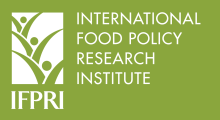Resource information
This paper considers urban-rural location and education as the main causes of expenditure inequality and attempts to examine inequality changes associated with urbanization and educational expansion in Indonesia from 1996 to 2002, using Indonesian monthly household consumption expenditure data. It introduces a hierarchical framework of inequality decomposition by population subgroups, which enables researchers to analyze inequality resulting from differences in educational attainment as well as inequality within each educational group, after the effects on inequality of urban–rural differences in the composition of educational attainments are removed. It finds that the urban sector’s higher educational group contributes significantly to overall inequality. Inequality within the group increased significantly once Indonesia recovered from the financial crisis of 1998. This, together with educational expansion in urban areas, led to a conspicuous rise in urban inequality. Overall expenditure inequality has increased markedly, due not only to the rise in urban inequality but also a widening urban-rural disparity, accompanied by a population shift from the rural to the urban sector. Since more people will obtain higher education as the economy continues to develop, and more jobs requiring specialized skills become available in urban areas, urban inequality is likely to remain high. In order to mitigate urban inequality and thus overall inequality, the government needs to introduce policies that could reduce inequality among households whose heads have a tertiary education. -- from Authors' Abstract


